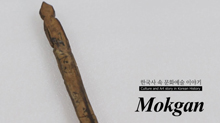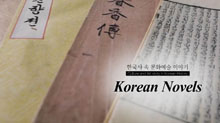The Story of Culture and Arts
- Image resource of Korean history
- Documents from History TextBooks
- Culture & Art Stories from Korean History
- Culture & Art Stories from Korean History - Korean
- National Institute of Korean History
- History net
- About the site
- Introduce
-
Numerous topics related to Korean culture and art are mentioned in middle and high school national history textbooks, but most of them are briefly described by era, making it difficult to understand their concepts, transition processes, and characteristics.
<Culture & Art Stories from Korean History> produces and provides video materials based on expert commentary on the flow, change process, characteristics and characteristics of each major topic in the field of culture and art in Korean history.

Scenario
King Jeongjo dreamed of creating Joseon’s first new planned city after visiting this location.
Where did the king visit?
The answer is Suwon!
In 1794, King Jeongjo ordered the construction of Hwaseong Fortress. It was a fortress furnished with all the latest technology of the time. Initially it was estimated to take 10 years to complete, but actually only took 2 years, 9 months.
However! With the outbreak of the Korean War in 1950, the fortress lost its old visage.
“Suwon Hwaseong Fortress was a victim of the devastations of war. Most of the wooden structures were lost, including the Jangan Gate and the Changnyong Gate. Many of the fortress walls were unfortunately destroyed as well.” Jo Seong U, Curator / Suwon Hwaseong Museum
How were they able to restore the fortress to its previous condition? The secret is in this book. Let’s take a look at the fruit of Joseon’s record-keeping culture, Uigwe.
Why did the Joseon Dynasty leave us the Uigwe?
In publishing this book, all will understand clearly this fortress construction project from beginning to end. - Jeongjo sillok (Veritable Records of King Jeongjo), Month 11, Day 9, Year 20 of King Jeongjo’s reign (1796)
Did they have a feeling of what might happen in the future? In the Uigwe, specific details about every part of the construction are listed, from beginning to end. The records were extremely detailed, including building plans, assembly instructions, the order of assembly, and detailed instructions for newly invented construction equipment, as well as an inventory of all items used and their unit prices.
“UNESCO has very strict standards when it comes to the restoration of a heritage site. Due to the existence of the Hwaseong Fortress Construction Uigwe, the source for the restoration was very clear.” Jo Seong U, Curator / Suwon Hwaseong Museum
Unlike other records, The Uigwe had a significant practical purpose, as we saw with Hwaseong Fortress, a cultural asset almost lost to time but which was able to be restored thanks to the Hwaseong Seongyeok Uigwe (華城城役儀軌).
If there is an important event of state, transcribe it into a Uigwe as documentary evidence for posterity. - Myeongjong sillok (Veritable Records of King Myeongjong), Month 9, Day 22, Year 18 of King Myeongjong’s reign (1563)
This was because the Confucian-based Joseon Dynasty valued etiquette above all else and created the Uigwe as a way to preserve procedural details of royal events. They wanted these procedures passed on to the next generation, and they had to be practical in order to be done well.
There is something that distinguishes the Uigwe from all other government records of the Joseon period. Not only do the records provide written descriptions, but they also include detailed illustrations.
Thanks to Uigwe, we are able to recreate various historical events from a single sheet of paper. The first appearance of interpretive dance, directed by Prince Hyomyeong, was performed at the fortieth birthday celebrations for Queen Sunwon in 1828. Prince Hyomyeong is an indispensable figure in the history of Joseon royal choreography, and we can still enjoy the charm of his dance today.
Thanks to the detailed records of the Uigwe, we can verify the strength and energy of Joseon culture at that time.
“Material like this, that so systematically and perfectly recreates the events of the time, is what makes the Uigwe just so special.” Shin Byung Ju, Professor of History / Konkuk University
The Uigwe, a unique record born from a culture of preserving tradition, was listed as a UNESCO Memory of the World in 2007.
What is the Modern Value of the Joseon Uigwe?
What is recorded in the pages of the Uigwe?
The Uigwe follows almost the entire history of the Joseon Dynasty, as compiling is said to have begun during the reign of King Taejo, and it records the lives of the royal family. It vividly depicts the life of the royal family, from a family member’s birth and the preservation of their placenta, to the appointment of a crown prince, coronations and weddings to funerals. All the different events and activities that took place within the royal family are recorded here.
When examining the Uigwe, we see it is composed of the “munseo”, where various information relating to an event is recorded, the “banchado”, an illustrated record of an important scene from an event, and the “doseol”, a page listing the items or the blueprints of a structure needed for an event. That is why when we look at the Uigwe, we get a sense of the fashion, technology, and life of the period. Furthermore, we can see the overall economic, social, and cultural circumstances of Joseon.
It would be great if we could verify what really happened throughout the 500 years of Joseon history through the Uigwe, but unfortunately, the records of the early Joseon period were burned during the Imjin War. After the Imjin War, all Uigwe created were well preserved. How were they preserved so well that they survive to this day?
It is because they were stored well in archival facilities located in Seoul and mountainous regions. In particular specially-made Royal copies of the Uigwe were stored on Ganghwa Island at the Oegyujanggak, or Outer Royal Library, a royal library annex.
However, French forces invaded Gwangha Island in 1866. Some 340 volumes that were stored in the Outer Royal Library were looted by the French, while the remaining 5,000 volumes were burned.
Royal copies, which had a silk cover and were filled with vivid illustrations, were also seized then. After the passage of much time, through the efforts of Dr. Park Byeongseon who worked at the National Library of France in Paris, the Uigwe forgotten deep in the French vaults came out to the world.
During French President François Mitterrand’s 1993 official state visit to Korea, one volume of the Hwigyeongwon Wonso Dogam Uigwe was returned. In 2011, 297 volumes of the Uigwe were returned by France after 145 years, but on the condition that they were loaned back to Korea, renewable every five years. In 2011, a historic year, another 158 Uigwe that were lost during the Japanese colonial period were returned.
“There have been many recent cases of Uigwe being used as a resource when making commercial cultural content. All of this was possible because Uigwe descriptions of events are so meticulously documented, to include illustrations. The Uigwe are critically important in allowing everyone to know the excellence of the cultural traditions of Korea.” Shin Byung Ju, Professor of History / Konkuk University
The Joseon spirit of record-keeping preserved within the Uigwe continues to this day. The deep historical value of these records was recognized by UNESCO and they were made a Memory of the World. Thanks to this recordkeeping spirit that persisted for centuries, the people of today are one step closer to those of yesterday.
[Epilogue]
Must-Know Facts on Culture and Art in Korean History
1. The Uigwe were made to preserve Confucian culture and traditions.
2. One thing you can find in the Uigwe but not in other Joseon government documents are various illustrations.
3. In 2011, after 145 years, France returned the Uigwe stolen during the 1866 French campaign on Ganghwa Island.





